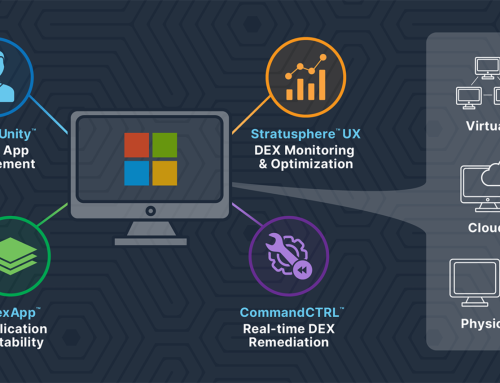Liquidware Labs introduced ProfileDisk technology in 2014 since that time we’ve had many Citrix and VMware customers leverage ProfileDisk to handle large profiles for non-persistent VDI environments. ProfileUnity also supports large profiles in  RDSH and XenApp environments by “containerizing” one or more areas of a users profile to virtual disk.One of the use many ProfileDisk use cases that has been proven over the years is Office 365 Cached Mode & Indexing. ProfileUnity also has the ability to “containerize” parts of the profile onto VHDs that the solution automatically provisions.
Office 365 cached mode is especially useful for Outlook by placing a local copy of your mailbox(es) on your desktop. This local copy performs more seamlessly than relying on a network/cloud copy of the same mailbox(es).  The problem with this on with non-persistent VDI comes because mailboxes are rather large, often gigabytes in size. Folder redirection, roaming profiles, profile tools from Citrix & VMware, and Microsoft UE-V can’t handle this use case for many reasons.
Microsoft OneDrive is also challenge in virtual desktop environments. To fully realize the potential of OneDrive, synced files need to reside both in the cloud and locally. In virtual desktop environments that are non-persistent, the cloud based OneDrive files need to transfer to the local desktop at every session. This is unacceptable because your cloud files will never by locally available when you need them. Transferring your files for every desktop session would also consume an exorbitant amount of bandwidth.
Both of these challenges in Office 365 become a simple physics problem really, “How do you get the large profile, including items like the Office 365 cache, to the users’ desktop without impacting login.”
ProfileUnity’s ProfileDisk and VHD features can do this seamlessly by enabling the users’ profile to reside on a VHD. ProfileDisk looks so native to Windows that Windows itself knows no difference of whether the data is local or on the network/cloud storage. ProfileDisk and VHD containers are unlike other approaches in the market because they do not use a file system filter driver or any “man in the middle” shim to present the profile to the session. The result? A lightning fast profile that loads in mere seconds. Outlook indexing for VDI also works great with the technology.
There are many other use cases for the technology but don’t forget, these are mere features in ProfileUnity with FlexApp, the industry’s most complete User Environment Management & Application Layering solution available today. We were innovative when we introduced ProfileDisk to handle large profiles in late 2014. We continue to be the only full UEM solution with a technology like ProfileDisk and VHD containers as features. Check out this new video I just wrapped up demonstrating ProfileDisk with Office 365 in a non-persistent VDI environment.Â








Leave A Comment
You must be logged in to post a comment.